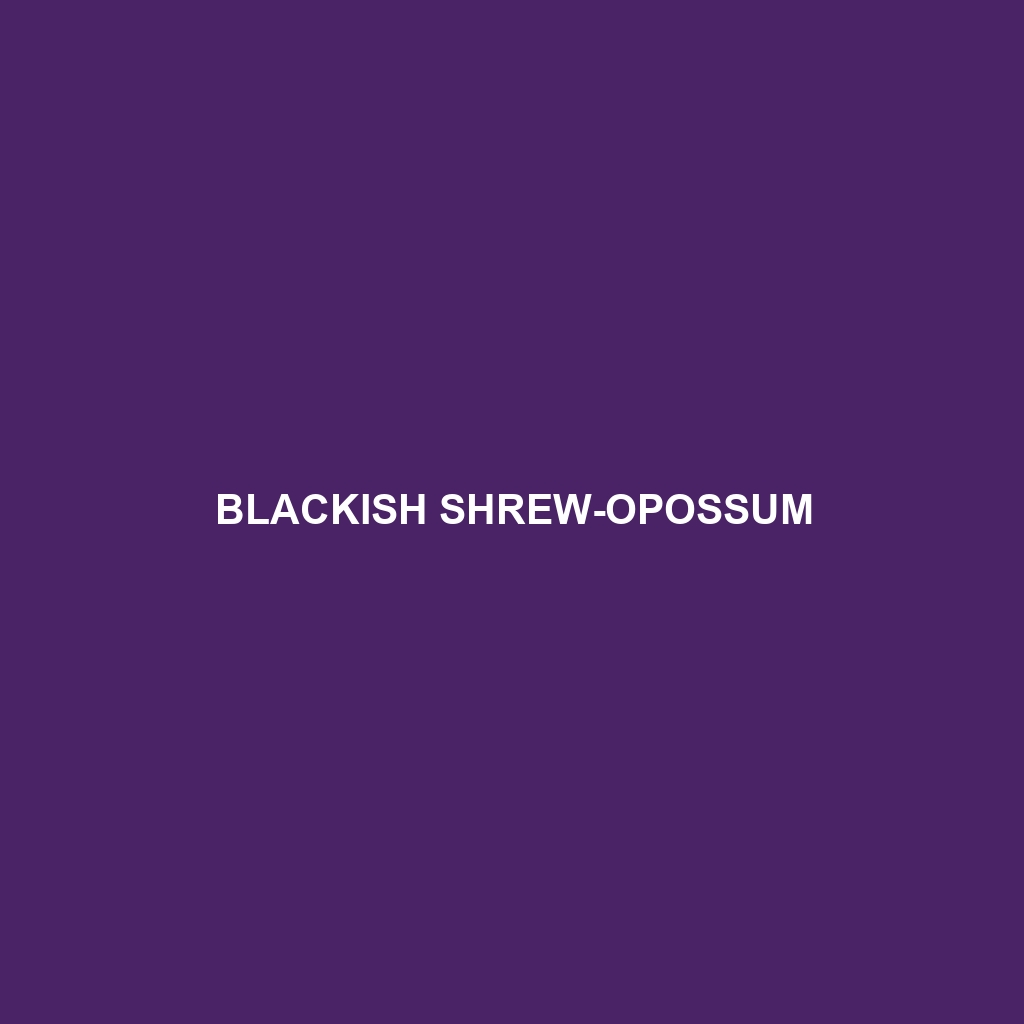Blackish Shrew-opossum (Caenolestes fuliginosus)
The Blackish Shrew-opossum, scientifically known as _Caenolestes fuliginosus_, is a small marsupial native to the Andean cloud forests of South America. Despite its name, this intriguing creature is more closely related to opossums than shrews. Its elusive nature and unique adaptations make it a fascinating subject for wildlife enthusiasts and researchers alike.
Physical Characteristics:
Size: The Blackish Shrew-opossum typically measures about 9 to 14 centimeters (3.5 to 5.5 inches) in body length, with an additional tail length of 7 to 12 centimeters (2.8 to 4.7 inches).
Weight: It generally weighs between 30 to 50 grams (1.1 to 1.8 ounces).
Coloration: As its name suggests, this marsupial features a predominantly dark, blackish-brown coat, which provides excellent camouflage against the forest floor.
Special Features: The Blackish Shrew-opossum has a pointed snout, large eyes, and rounded ears, all of which contribute to its keen sense of smell, sight, and hearing. Its tail is semi-prehensile, aiding in balance and navigation through the dense underbrush.
Behaviors:
Social Interactions: Blackish Shrew-opossums are generally solitary creatures, coming together only during the breeding season. They are nocturnal and highly secretive, which makes observing their social behaviors challenging.
Feeding Habits: This species is insectivorous, primarily feeding on small invertebrates such as insects, spiders, and earthworms. They are also known to consume small vertebrates and occasionally plant material.
Ecological Roles: As insectivores, Blackish Shrew-opossums play a crucial role in controlling insect populations. They are also prey for larger predators, thus contributing to the food web dynamics within their ecosystem.
Habitats:
Preferred Environment: The Blackish Shrew-opossum inhabits the montane cloud forests and paramo regions of the Andes, ranging from Colombia to Ecuador and northern Peru. These areas are characterized by high humidity, dense vegetation, and cool temperatures.
Altitudinal Range: They are typically found at elevations between 1,500 to 3,500 meters (4,900 to 11,500 feet) above sea level.
Adaptations:
Camouflage: Their dark fur allows them to blend seamlessly into the forest floor, protecting them from predators.
Nocturnal Lifestyle: Being nocturnal reduces competition with other species for food and decreases the risk of predation.
Sensory Adaptations: Enhanced senses of smell and hearing help them locate prey in the dark, dense forest environment.
Conservation Status:
Current Status: The Blackish Shrew-opossum is currently listed as “Least Concern” on the IUCN Red List, but habitat destruction and climate change pose ongoing threats.
Conservation Efforts: Conservation initiatives focus on preserving their natural habitats through protected areas and sustainable land-use practices.
Fun Facts:
Despite their name, Blackish Shrew-opossums are marsupials, not true shrews.
They have a unique dental formula that helps them efficiently process their insect prey.
The Blackish Shrew-opossum is one of the few marsupials found outside of Australia and the surrounding islands.
By highlighting these captivating details, you can provide your website visitors with a comprehensive understanding of the Blackish Shrew-opossum and its significance within the ecosystem.
